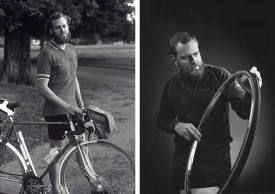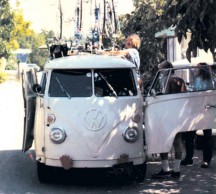From selling components on a trailer to creating the most popular bike brand on the market: the history of Specialized
In 1973, if you stood in one of the busiest spots in San Francisco and its suburbs, in addition to a lot of hippies with flowers in their hair, you were likely to see a 20-year-old with a bicycle and a trailer full of components. His name was Mike Sinyard, and the story of how he went from selling bicycle parts on a trailer to creating Specialized, the most popular bike brand, is one of the most fascinating in the industry.

Specialized: the Californian giant born in Italy
What is now one of the industry's best-known CEOs was then just a kid fresh out of college who was fascinated by cycling. So much so that he sold his Volkswagen Kombi (that icon of California in the 60s and 70s) to pay for a trip to Europe on pedals. Holland, Barcelona, Italy...

RECOMENDADO
Sinyard travelled to all the mythical places, those that sounded like two-wheeled history. And in Milan, the young American finally met the man who would change his life. Cino Cinelli, the founder of the legendary Cinelli brand. Fascinated by its quality, he bought all the bikes and components he could from the transalpine manufacturer, sent them back to his country and started selling them on the streets of the city.

Soon, this unknown in the world even managed to convince Cinelli to become his importer in the United States, and founded Specialized. The name came, according to Sinyard himself, from an Italian word: "specialista" (which, as he says, means the same as the Spanish word with an "e"). At that time, they were still selling only components.
But one of the most important moments in Specialized's history came in 1976. That's when it began collaborating with Tim Neenan to launch its first in-house frames and bikes, which were manufactured in Japan.
Specialized Stumpjumper, the first mass-produced mountain bike
The other came in 1981, when Sinyard identified the mountain bike explosion in time. Of course, it had been a long time in the making, for most of the 1970s. But, throughout that period, it had relied on handmade bikes. They were assembled by the enthusiasts themselves, piecing together parts from here and there, according to their tastes. There were also some produced by small brands, in small runs.

And then came the Stumpjumper. A steel frame designed by Neenan and made in Asia, handlebars inspired by those made by Magura for certain bikes, brake levers taken from other bikes, the Tomaselli, a SunTour ARX GT road derailleur... That brilliant medley weighed 13 kg and sold for 750 dollars. They had found the formula for success.
It is said that the first batch of 250 units sold out in just two weeks. And, thanks to aggressive marketing campaigns unprecedented in the industry, it continued to leave the shops at breakneck speed, becoming one of the longest-lived and most legendary models in the world. You could say that this bike, almost single-handedly, spawned the mountain bike fever of the 1980s.

It is still produced today and, although it has inevitably changed a lot over the last 40 years, it still retains some of the features that saw its creation. The rest is history. The history of a company that today employs almost 2,000 people worldwide and generates several hundred million euros in revenue.
Not just MTBs, of course, but they design everything from road to gravel models, including e-bikes, one of the markets they have focused on the most in recent years, and they were "a few hundred dollars" out of business in the 1990s, according to Mike Sinyard. And yet, in the 1990s, they were "a few hundred dollars" away from disappearing, according to Mike Sinyard. What saved them in the end? As before, innovation.
Article written by Iván Fombella.





